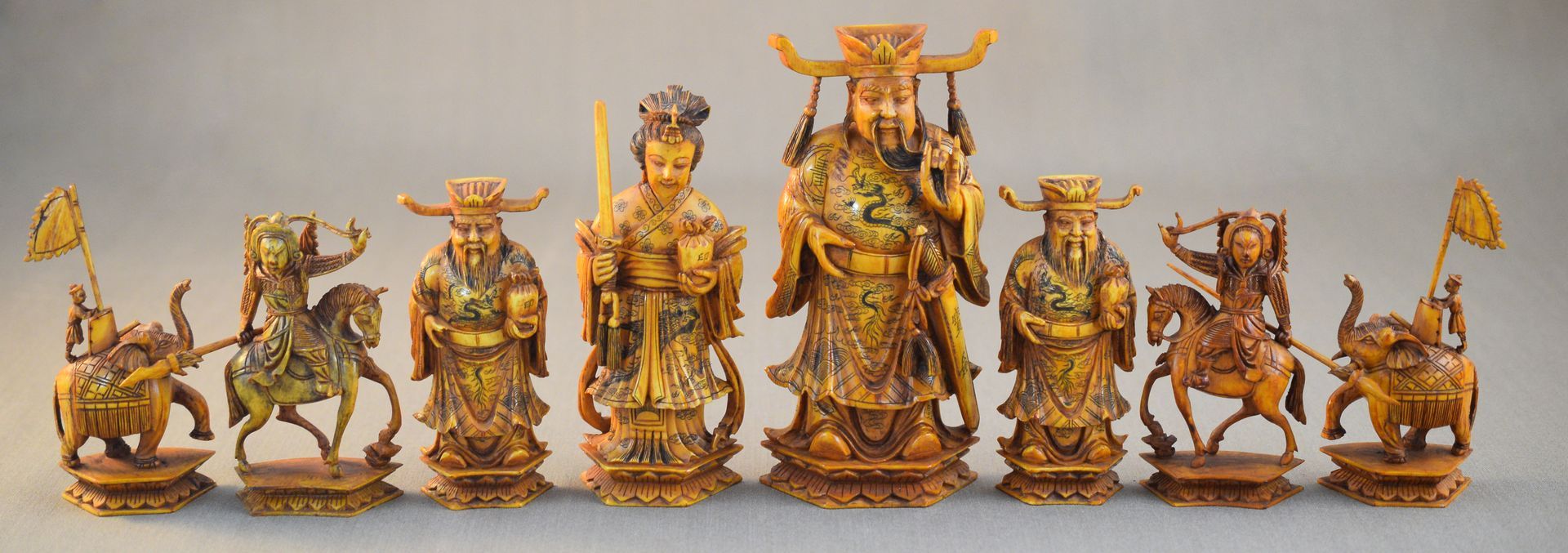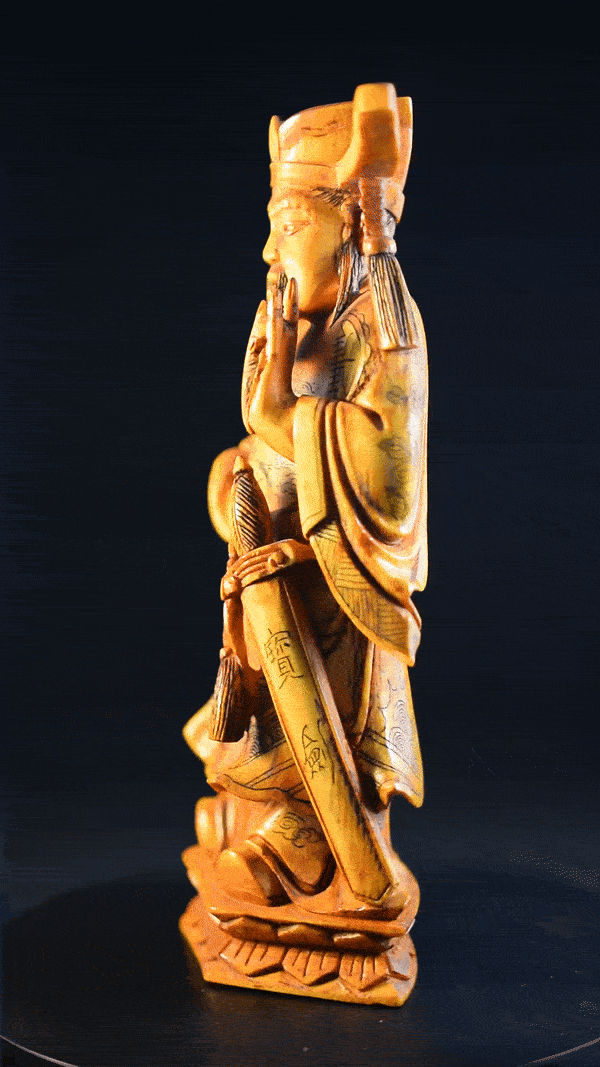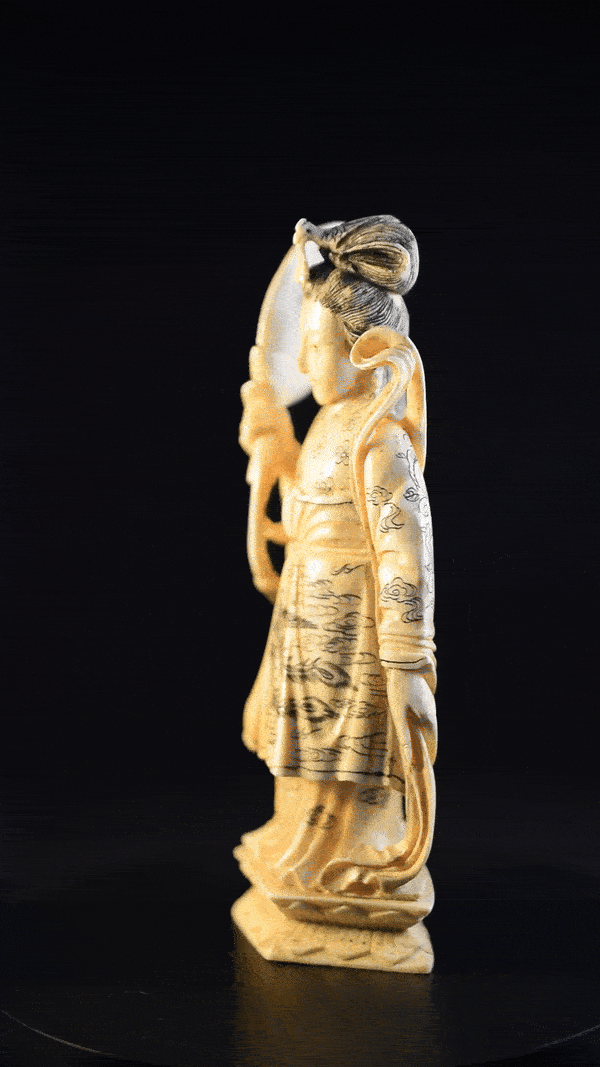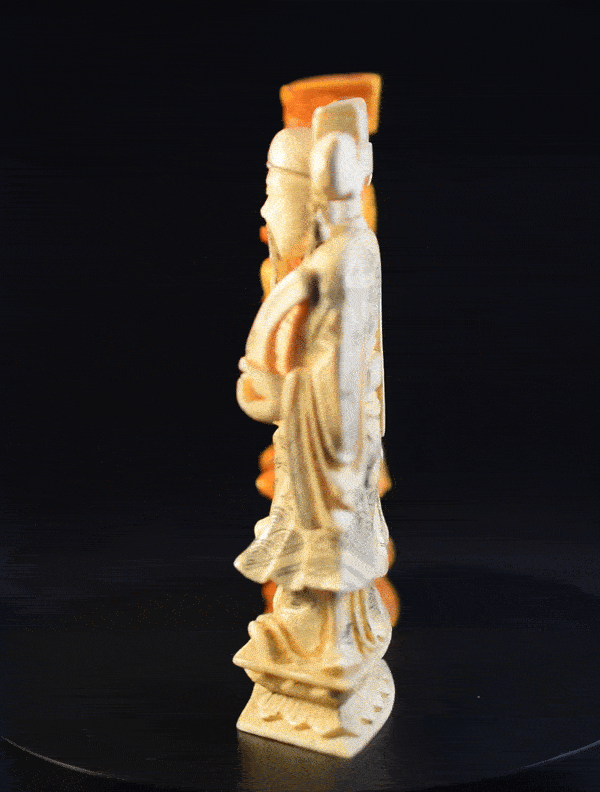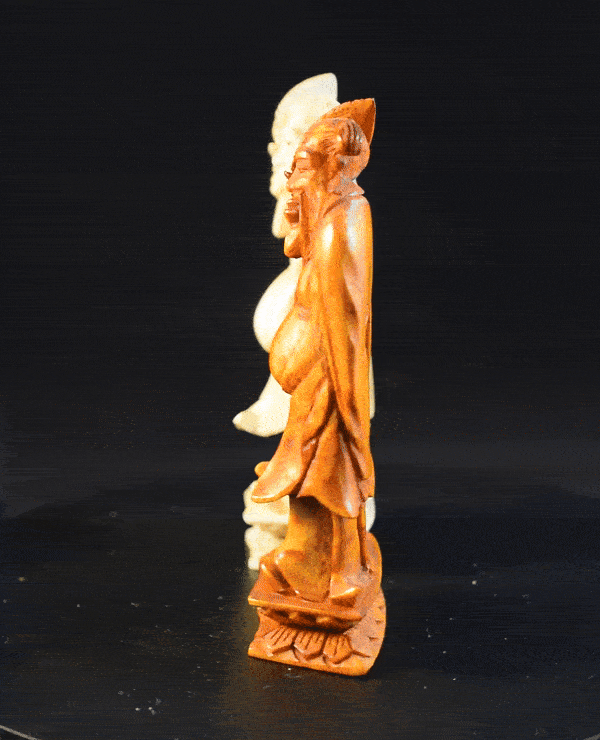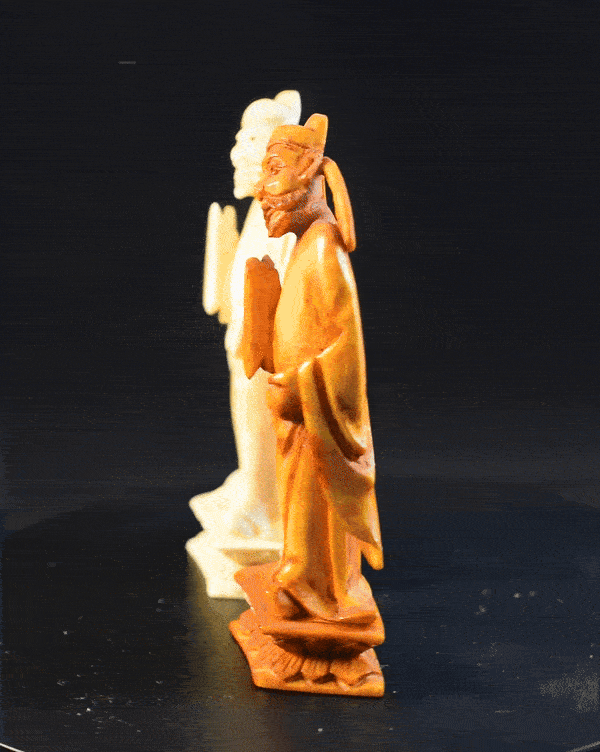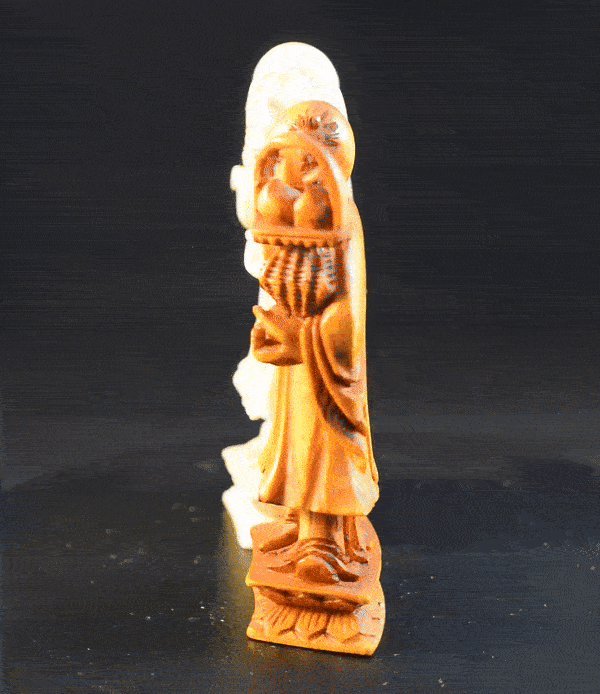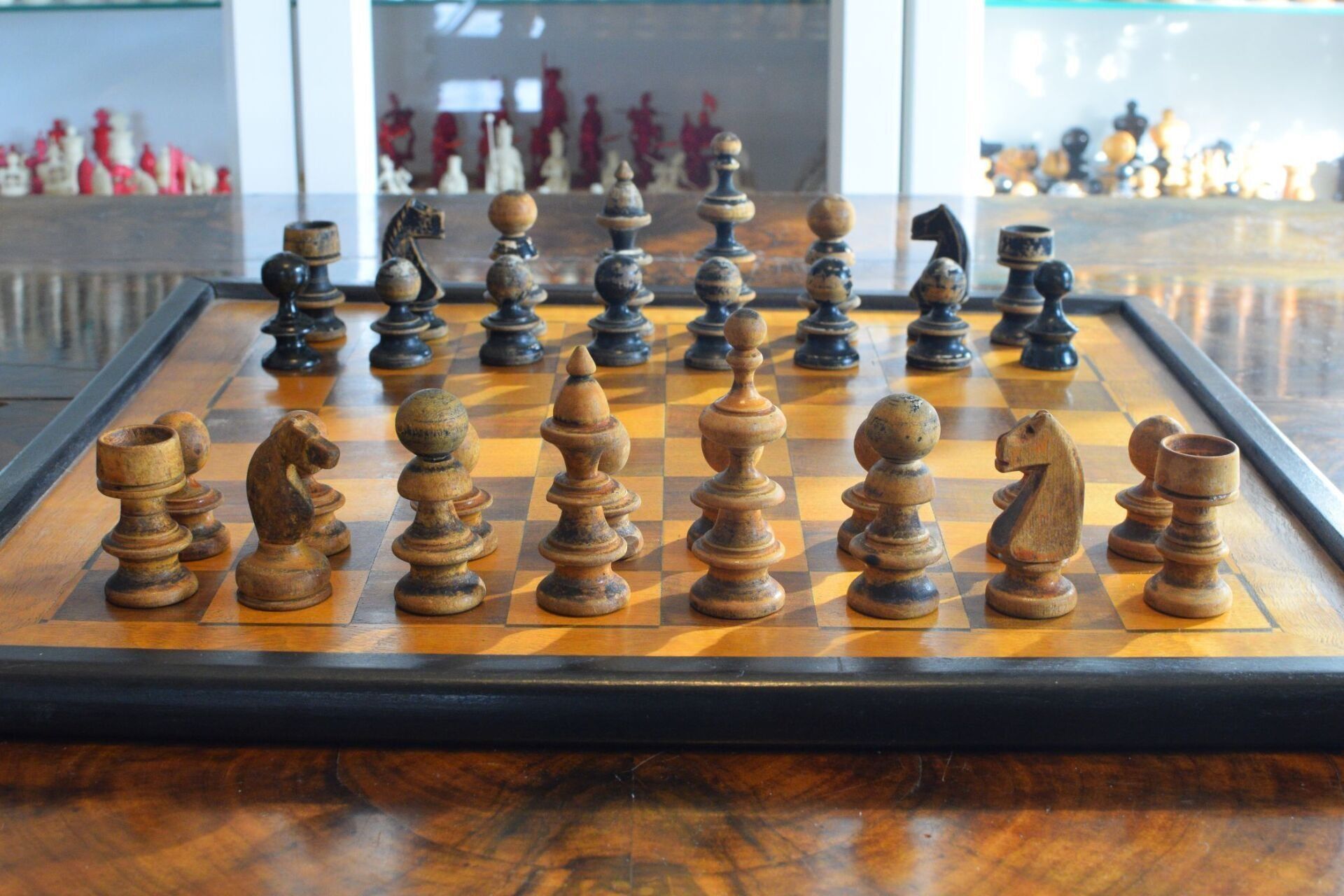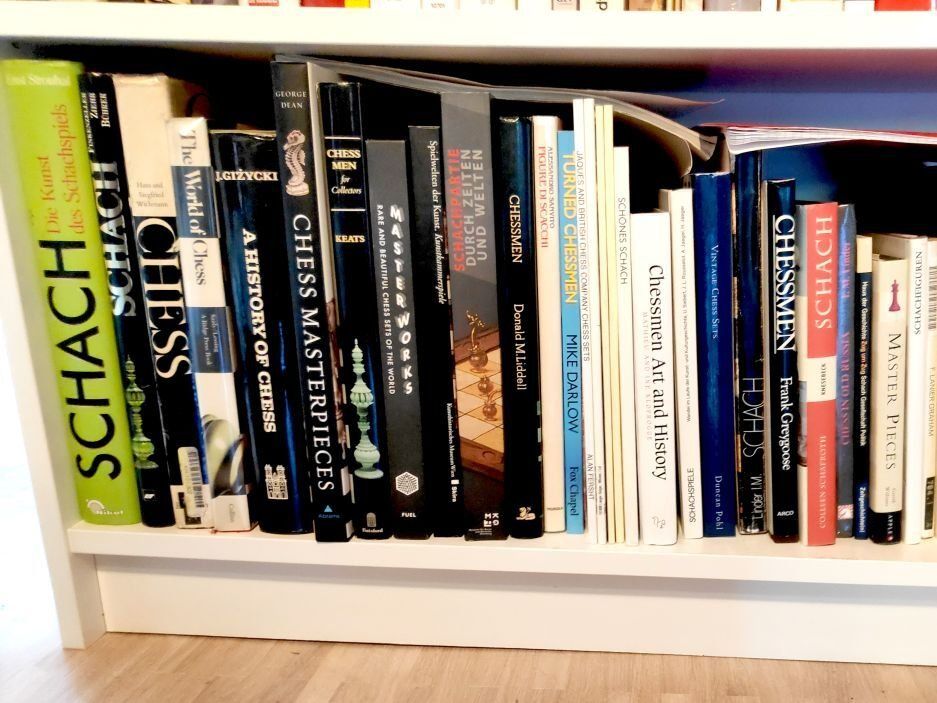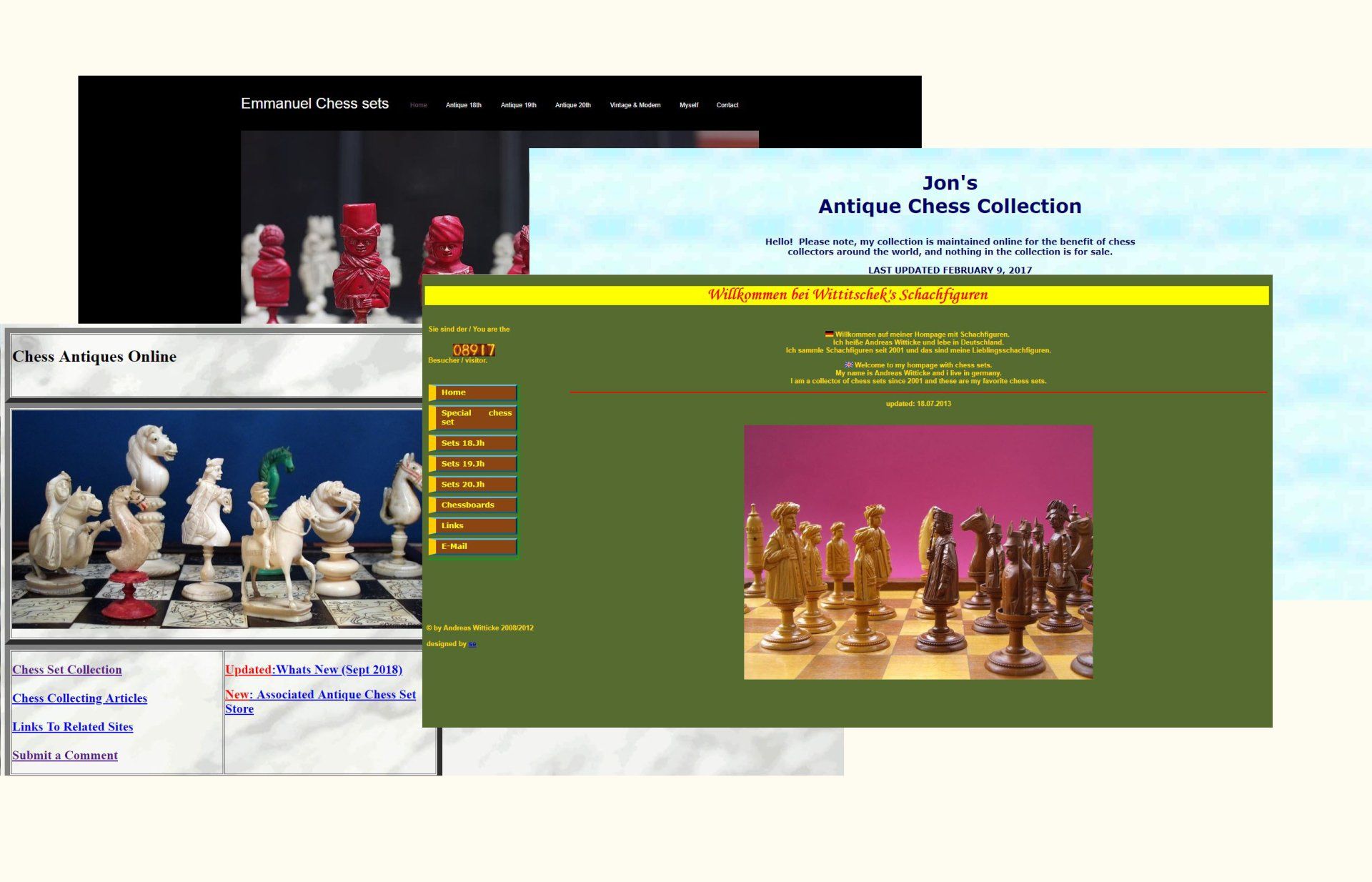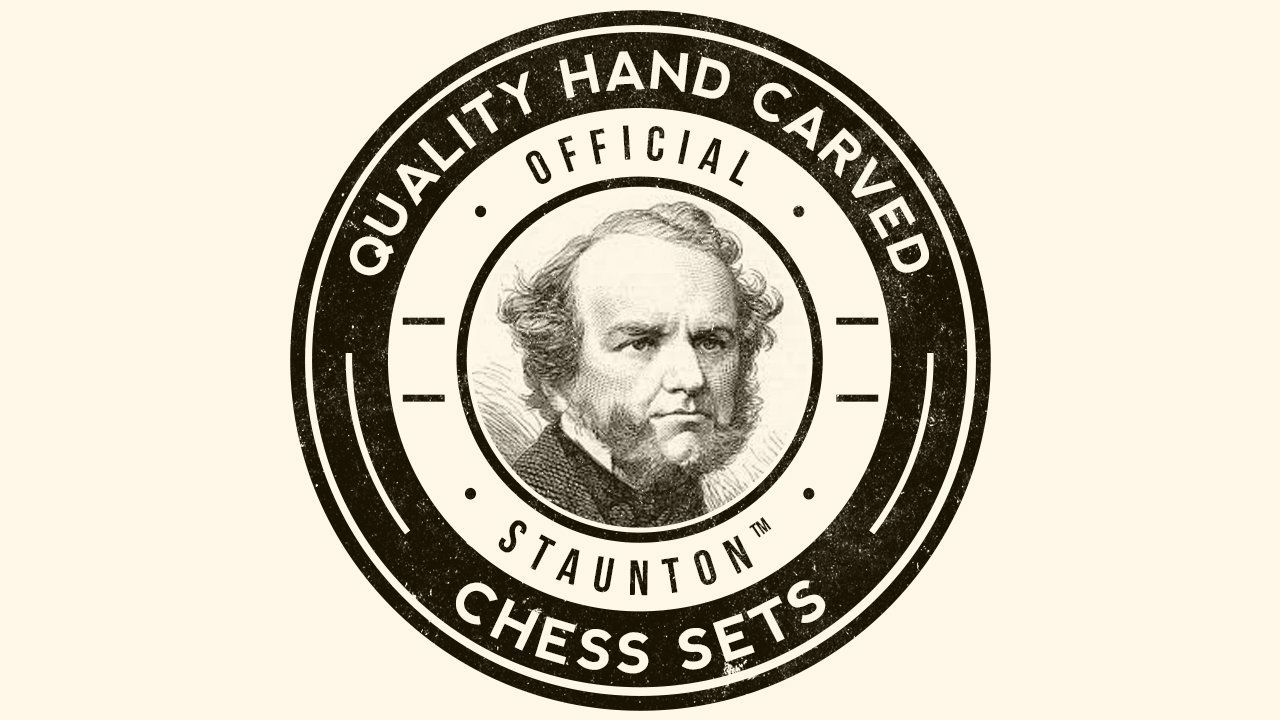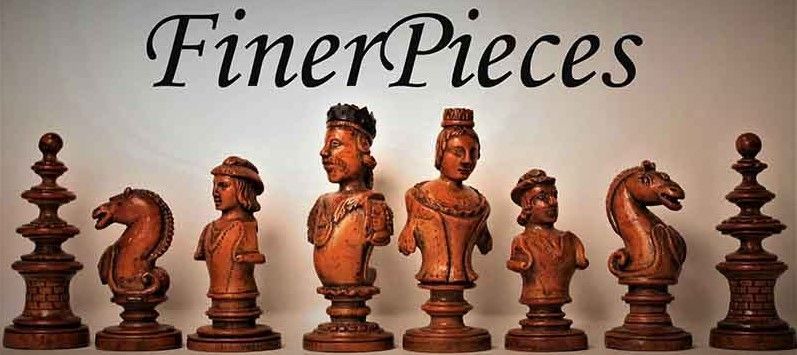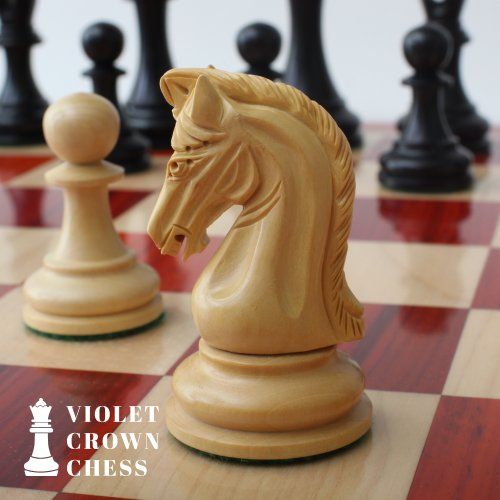Chinese Figural Chess Set, ca. 1920-1950
Here is a very special chess set of Chinese origin. The pieces were carved from ivory, one side natural, the other side tea stained, the kings, queens and bishops with additional black ink highlights. Particularly impressive are the kings and queens, which are massive pieces carved from single blocks of ivory. The kings have an impressive size of 16 cm and a weight of 350 grams. The white king is shown as a Chinese aristocrat or official carrying a sword on his belt. His left hand is raised in the so called “sword gesture” (剑指). He is wearing a headdress resembling a Chixiao mao (鴟鴞帽), a so-called owl hat, which is surprising as this type of headdress is mainly known for children. The white queen is a female dressed in a gown holding up a fan in her right hand. The black king is depicted as an aristocrat or official also carrying a sword on his belt and raising the fingers of his left hand in the so-called Tao gesture (道指). He is wearing a headdress reminiscent of a Zhanjiao Putou (展角幞頭), lit. "spread-horn head cover", which was the headwear of Song dynasty officials. The black queen is a woman dressed in a gown carrying a raised sword in her right hand and a small bag in her left hand. The bishops are shown as Chinese counsellors, the knights as mounted horses with riders wielding a lance and the rooks as war elephants carrying a flagged turret with cannon and rider.
The real highlight of the set, however, are the pawns, which are depictions of the Eight Immortals, a group of legendary characters in Chinese mythology. Starting from the left, the first immortal is Zhongli Quan (鍾離權). He is usually depicted with his chest and belly bare and holding a fan made of feathers, which – in legend – can resurrect the dead and transform stones into silver and gold. The second from the left is Li Tieguai (李鐵拐), who is considered to be mentally disturbed and associated with medicine and easing the suffering of the sick and needy. He can be identified by his iron crutch and Calabash bottle, in which he is carrying his medicine. The third one from the left is Cao Guojiu (曹國舅), who is believed to be a descendant of Cao Bin, a general of the early Song dynasty, and a younger brother of Empress Cao, the wife of Emperor Renzong of the Song dynasty. Being regarded as the patron deity of acting and theatre, he is often depicted dressed in official robes and holding a paiban, a clapper made from several flat pieces of hardwood or bamboo, which is used in many different forms of Chinese music. The next one from the left I believe to be Zhang Guo, better known as Zhang Guolao (張果老). The epithet “Lao” added at the end of his name means “old”, which is symbolised here by his leaning on a staff. His emblem is a fish drum, a tube-shaped bamboo drum, which he is in this case carrying on his back. Pawn number five from the left is He Xiangu (何仙姑), who is easy to identify, as she is the only female in the group. She is shown carrying a lotus flower, which she is using to improve mental and physical health. The sixth pawn from the left is Lan Caihe (藍采和), who is the only one of the Eight Immortals whose gender is ambiguous. He is considered the patron deity of florists and gardeners, and hence can usually be recognised by carrying a basket of fruit or flowers. The second to last pawn from the left is Lü Dongbin (呂洞賓), a scholar and poet, who is said to have lived during the Tang Dynasty. He is considered to be the leader of the Eight Immortals and is often depicted dressed as a scholar carrying a sword to dispel evil spirits. The last pawn is Han Xiangzi (韓湘子). He is very easy to identify, as he is often depicted carrying a dizi (a Chinese flute), since he is also regarded as the patron deity of flutists. The former owner of the set acquired it in an auction by Sotheby’s in 1984, but even with the help of Sotheby’s archive, I was unfortunately not able to find out more details on the set’s provenance.
Sets of this pattern were apparently made from the 1920s to the 1960s. The older sets are usually characterised by better quality of carving, which became coarser in the 1960s when sets of this type were produced in larger numbers. Since the quality of the set shown here is excellent, I tend to believe that it was made in the first half of the 20th century, but that again is not certain. I know of an almost similar set which was bought in Hong Kong in 1957. What is certain is that before the Second World War, only about 100 ivory carvers remained in Hong Kong from the numerous Cantonese ivory carvers of the 19th and early 20th centuries, but ivory processing grew strongly from 1950 onwards, until finally, after the Washington Convention on International Trade in Endangered Species of Fauna and Flora came into force in 1989, there was a slump in sales figures and many factories had to close.

